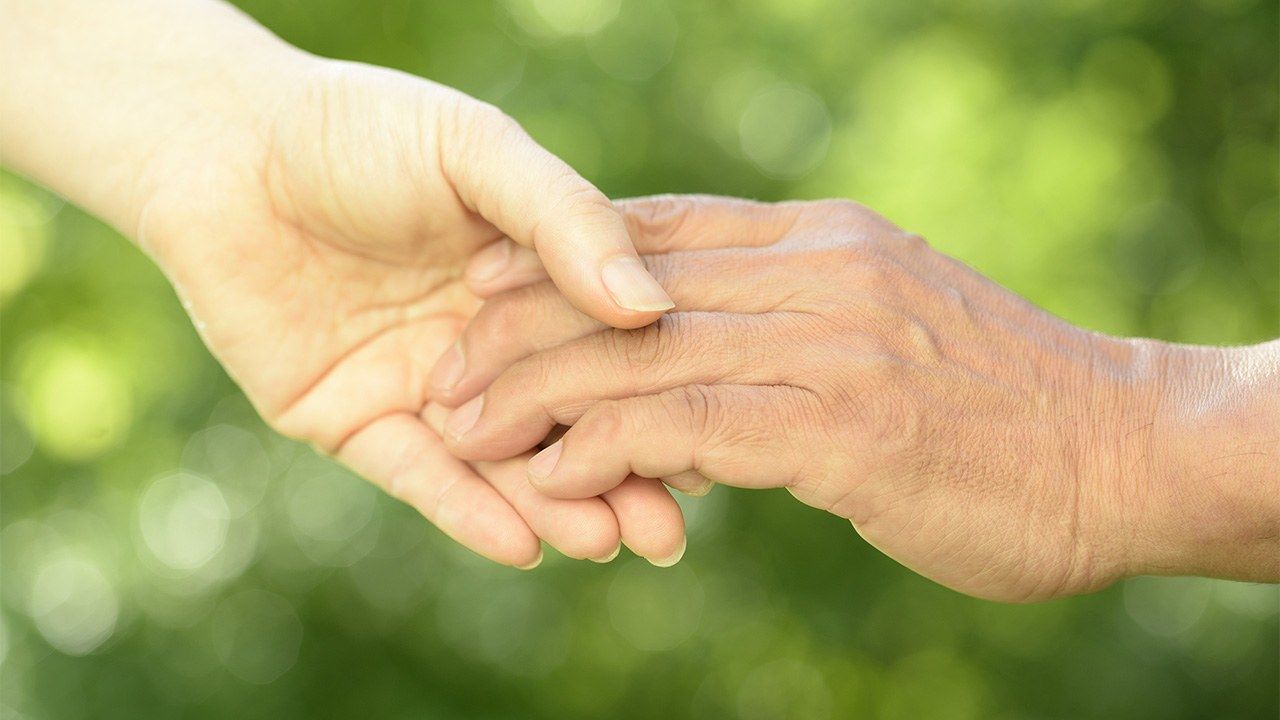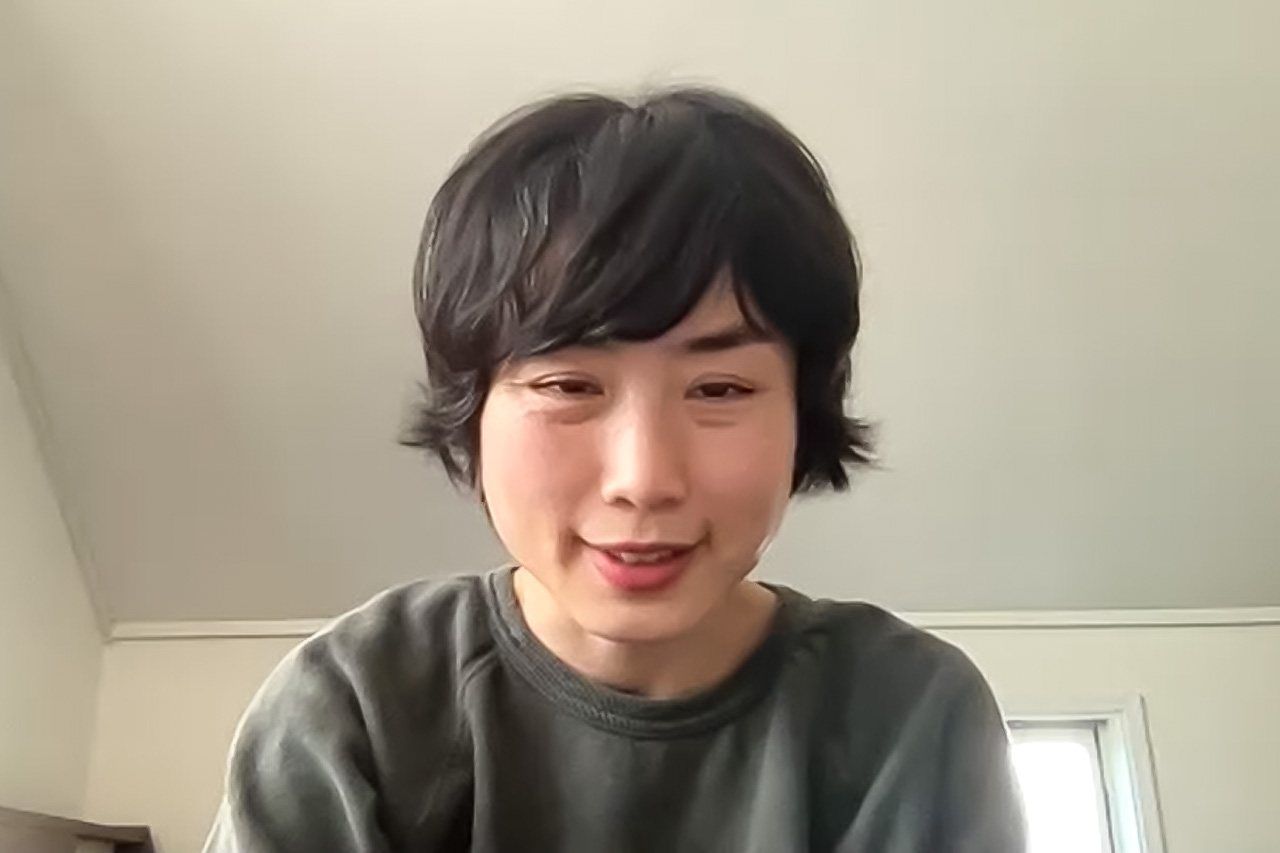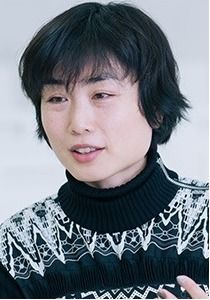
Touch and Human Relationships in the Touch-Deprived Era of COVID-19
Society Culture Health- English
- 日本語
- 简体字
- 繁體字
- Français
- Español
- العربية
- Русский
In February 2020, the Tokyo Institute of Technology launched its Future of Humanity Research Center. As advancements in fields like artificial intelligence and the development of human genome editing are shaking established definitions of “human,” this research center is integrating humanities and social sciences knowledge in an effort to comprehend the changes that science and technology are producing for humanity, along with the values that we should preserve. The center aims to explore humanity’s future from diverse perspectives.
The center’s director, Associate Professor Itō Asa, has worked with people with various disabilities, including people with visual or hearing impairment and people who have lost all four limbs, to understand how they learn to use their bodies and experience the world around them.
Inspiration in Insects and Stammering
“I was fascinated by insects as a child, and loved to draw them,”says Itō. “When I observed insects closely and drew their fine structures, I sensed that a different perspective of the world must be integral to their existence. I loved this idea, and it led me to becoming a researcher.”
Itō was interested in research from a comprehensive, macroscopic perspective, for example, understanding how different organisms perceive the world they live in. She began to study biology, but became disillusioned with efforts to analyze DNA in order to understand the essence of life. In her third year of university, she switched to liberal arts, specializing in aesthetics. “The field probes vague matters that are hard to express in words, such as people’s feelings when they view works of art.”
She herself had a stammer, which made her reticent to speak in front of others—another reason for her choice of major.
“I had trouble speaking—my words didn’t match what I wanted to say. From my childhood, I always made minor adjustments to my physical behavior and to how I spoke. My current area of research is people who have different disabilities from mine. I spoke to people to find out how they dealt with the fact that their body didn’t always do as they wanted, to learn how they coped, in order to imagine and understand their world. For example, people are said to obtain up to 90 percent of their information visually. But reliance on our eyes makes us believe that the visual world is everything. When we experience the world by other means, we gain a very different perspective. I wondered how people with visual impairment saw the world. I wanted to know what it was like to be freed from the constraints of sight.”

Itō believes her own journey through life with a stutter also helped her research.
“After I began research, my experiences with a stutter proved useful. When I tried to understand the sensations of someone who can’t see, there were aspects I could grasp by extrapolating from what I’d been through. But at the same time, I needed to expand my own understanding. Knowing others is partly a process of changing oneself.”
Touch in Human Relationships
Itō’s latest book, Te no rinri (The Ethics of the Hand) investigates human relationships from the perspective of touch. “In a world that’s increasingly segmented, I think that touch provides insight for interpersonal relations. In our society, human relationships are usually based on vision. But as a result, we may draw boundaries between ourselves and others, or adopt hostile attitudes. I believe that relationships where people don’t draw firm borders around one another are dependent on touch rather than sight.”
Two key concepts of her investigations are sawaru and fureru. In English, these words are both rendered as “touch,” but there is a difference in nuance between the terms. “There would certainly be differences in the codification of feelings in different cultures. When words are used, they create boundaries around sensations.
Sawaru refers to our interaction with objects (including people as physical entities) to determine their physical characteristics. Fureru describes human interaction with affection and mutuality. In terms of our mode of communication—our attitude or manner—sawaru is the transmission mode, where the sender delivers a one-way message to the receiver. Fureru is a real-time generative mode, created in the moment. Itō takes cues from these two verbs to examine how people interact.
“Fureru implies a relationship where mutual boundaries and roles are fuzzy. A related term, fureau, meaning interaction, does not specify who is touching and who is being touched, and does not imply monodirectional communication. It is communication where there is reciprocal exploration. In Japan, the notion of the individual is not particularly strong. Instead, there is a greater focus on the setting, and a tendency to prioritize unity between people in that setting.
“Even in conversation, it is common to hold off stating the conclusion. One person might make an unfinished statement ‘Today’s weather . . .’ leaving it to the other person to complete the sentence: ‘Isn’t it lovely!’ The distinction between ‘I’ and ‘we’ is vaguer than in many Western cultures. I believe this probably also affects the perception of touch, which plays an important role in crucial life stages, such as giving birth, child raising, nursing and deathwatch.” Realizing that touch is a common factor in both intimacy and violence, Itō explains that we must reconsider what constitutes “good touch.”
Discomfort with the Term “Diversity”
The different types of physical disability each have their own implied “culture,” Itō explains.
“I was nervous when I first interviewed blind people. I was concerned that my words might cause offense or hurt the person. But I relaxed after one interviewee told me my world also sounded interesting. I realized that our differences were akin to cultural variance. The world of blind people and that of sighted people have their own cultures. It was enough for me to show my interest in their different way of handling situations. Since then, I’m less concerned about what I should or shouldn’t ask. Instead, I view the conversations in the context of ordinary human relationships.”
Itō feels that she learns more from chit-chat than through research interviews. “At the outset, I’m conscious of the other person’s disability, but I forget about it in the process of our conversation. After I become familiar with various sides of their personality, we find connections, and chat about child raising, musical obsessions, and so on.”
She is uncomfortable with recent overuse of the term “diversity” in the lead-up to the Tokyo Olympics. Although the intention is to create a society where anybody can participate regardless of ability, sexual orientation and so on, the phrase can be hollow. She worries that it can result in nonintervention or even affirmation of division. Labeling someone as “disabled” prevents us from recognizing diversity within an individual, says Itō, noting that true acceptance of diversity comes through respecting diversity within each person.
“I often hear that people with disabilities feel compelled to perform the role of a disabled person. At the same time, there’s a tendency to emphasize the difference between them and those around them. When someone declares their developmental disorder and explains how it makes them different, it can enlighten others. But it also results in division. I hope to enable people to transcend the mental comprehension of words, to facilitate physical understanding. In this way, I consider my research as a form of translation.”
Considering True Altruism
Itō has spent the past year at the Future of Humanity Research Center studying the concept of altruism.
“Rather than trying to promote altruism, though, we’ve focused on bad aspects of altruistic behavior in order to ascertain what truly beneficial actions are.
“In regard to disability, often our first instinct is to reach out and help someone in trouble. While it appears altruistic, it might not be in the best interest of the person concerned. There is a tendency for transmission-mode interaction, imposing the helping party’s sense of righteousness upon the person with a disability. It forces the other party to perform as a disabled person, in the belief that they will be thankful. But this is not altruism.”
She believes that altruism is the creation of space. “It involves providing greater leeway, including time, when interacting with someone. Instead of attempting to exert control over the other person to fit our plans, we should allow space for them to exercise their potential. In the process, our own perspective and attitude also change. I believe that altruism is a relationship where the acting party also experiences change.”
For example, when helping someone, we receive physical information about the other person through the act of touch. By allowing greater leeway, the interaction shifts into the zone of fureru. If the person receiving care trusts the helper, entrusts themselves physically to that partner, it gradually leads to the mutual exchange of internal sensations, whereby communication is realized. Itō describes this process as a form of physical melding bringing the parties together more deeply with one another. “Unless the manner of interaction is changed through mutual-access communication, it only causes hardship for the party receiving help.”
How Will People Interact After COVID-19?
During the COVID-19 pandemic, Itō has had opportunities to video conference with her friends who have disabilities.
“One of my friends who is completely blind commented that the whole world’s population now suffers from touch deprivation. They want to touch, but they can’t. As a result, we may see changes to culture and values, although the impact may vary according to a country’s culture, a person’s age, and their circumstances. One example is the Japanese custom of bowing instead of hugging, which is gaining greater attention in other cultures. It will be very interesting to see whether such changes take place in the future.”
“In particular, food culture may be transformed. One example is that children are now instructed not to talk during school lunch. Although this may initially seem uncomfortable, after a few years, eating in silence could become the cultural norm. Prior to the pandemic, people were perfectly willing to share a hotpot meal with a new acquaintance, but this might not be the case in future. It’s also possible that we’ll be more sensitive about controlling the routes of infection for the common cold and influenza.”
Our touch-deprived existence could last for years.
“Could we learn how to communicate emotionally without touch? We’d be forced to find other means. People with disabilities have always had to improvise. Simply because someone is blind, that doesn’t mean they avoid art exhibitions. Instead, they find other ways to appreciate art, such as through conversation. Touch deprivation also necessitates development of new approaches.”
There is no doubt that touch will continue to play a vital role at times such as childbirth and nursing. While we keep investigating different forms of touch, we also need to search for non-physical modes of touch. Itō believes that, although the amount of touch we experience has decreased, there is a need for us to preserve the value of fureru-type reciprocal touch.
(Originally published in Japanese, based on an interview by Itakura Kimie of Nippon.com. Banner photo © Pixta.)
diversity communication disabled disability care workers COVID-19
